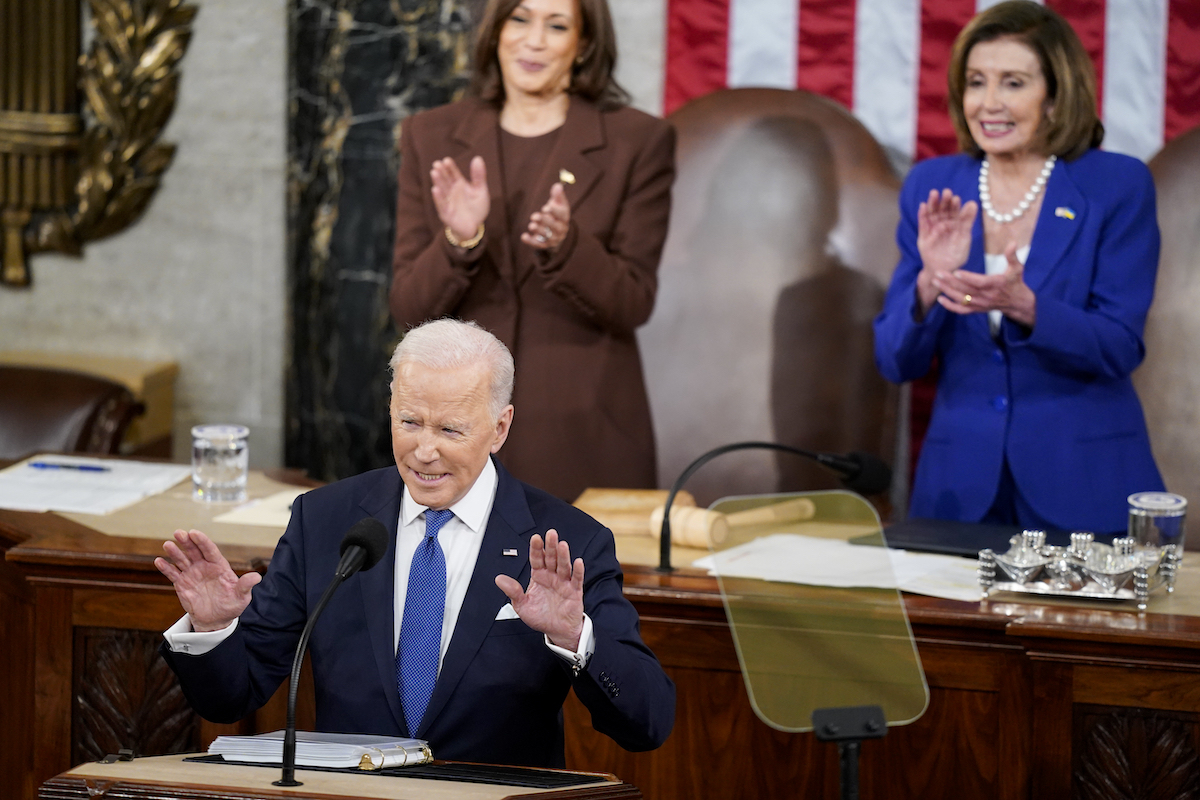In the fable of “The Bell and the Cat,” a group of mice discuss how best to protect themselves from a rapacious, predatory cat who has been hunting them down. One mouse suggests they put a bell on the cat so they’ll know when the cat is approaching. All the mice agree this is a good idea. But there isn’t a single mouse who wants to be the one charged with putting the bell on the cat.
It’s in every mouse’s interest to put the bell on the cat, but it’s not in the interest of any individual mouse to be the one actually to do the job.
Similarly, it’s in the interest of the modern American presidency, not to mention the American nation, to end the in-person delivery of the State of the Union. But it’s not clearly in any individual president’s interest to be the one who pulls the plug.
For more than 100 years, the presidential obligation to update Congress on the state of the union came mostly in the form of a letter. But as is true of so many awful things in American political history, it’s President Woodrow Wilson who’s responsible for the current spectacle of the in-person address.
Once upon a time, political soothsayers would speculate about how big a bump in public opinion the president would receive from a successful State of the Union. Presidents have viewed the speech as a way to reframe and reboot their flagging presidencies. Neither of these things have been true for years now.
Today the State of the Union exists mostly as a vehicle for the president of the United States to lie to the American people and set himself up for future failures.
Now, all politicians lie. President George H. W. Bush asked us to read his lips that there would be “no new taxes” before he, in fact, raised taxes. President Barack Obama told us that “if you like your healthcare plan, you can keep your healthcare plan” before millions of Americans saw their healthcare plans canceled after the passage of the Affordable Care Act.
Every president, indeed every politician, tells these kinds of lies. Most of them are the relatively commonplace political spin that is part and parcel of politics and may not stand out to us in our collective memory as much as these two famous examples. But the State of the Union now invites a more harmful form of lying that is helping to erode Americans’ faith in our political institutions: lying about what can actually be accomplished in our system of governance.
Since at least the time of Bill Clinton’s presidency, the State of the Union has included a laundry list of policy priorities, often completely disconnected from political reality. This year, President Biden rattled off the components of his Build Back Better agenda, rebranded as “building a better America.” Set aside for a moment that it is Congress, not the president, who initiates legislation and that it shouldn’t matter all that much what any given president wants Congress to do. The biggest problem with these lists is that they further a trend of telling the American people that politicians can accomplish things they simply cannot.
In 2013, Sen. Ted Cruz led a shutdown of the government, promising it would result in President Obama’s approving the defunding of his signature healthcare legislation. That was never going to happen. While campaigning for president, then-Sen. Kamala Harris promised that “on day one” she’d take executive action on gun control that would clearly be illegal. That was never going to happen either.
Politicians keep promising the American people that all their myriad problems can be solved just by voting for them. Then, when those problems linger, the American people toss out those politicians who lied to them in favor of another group making different lies.
The result of this perverse two-step has been a steep decline in Americans’ faith in our own institutions of politics and government. So much so as to render the one line every president delivers in the State of the Union address—“The state of our union is strong”—also a lie.
The American presidency is one of the world’s most exclusive clubs. Only 45 men have served in that role in American history. Only six of those men, including the current president, Joe Biden, are alive at this moment. The group of people who could potentially become president in the near future is larger—and perhaps after the unlikely election of Donald Trump in 2016 even larger than we might think—but it’s still not an enormous group of people.
Yet even a group that small and that exclusive can suffer from a collective action problem. The president who finally decides to be the one to put the bell on the cat and put the State of the Union out of its misery will have done our nation a great favor.
This article originally appeared in The Detroit News on March 11, 2022

